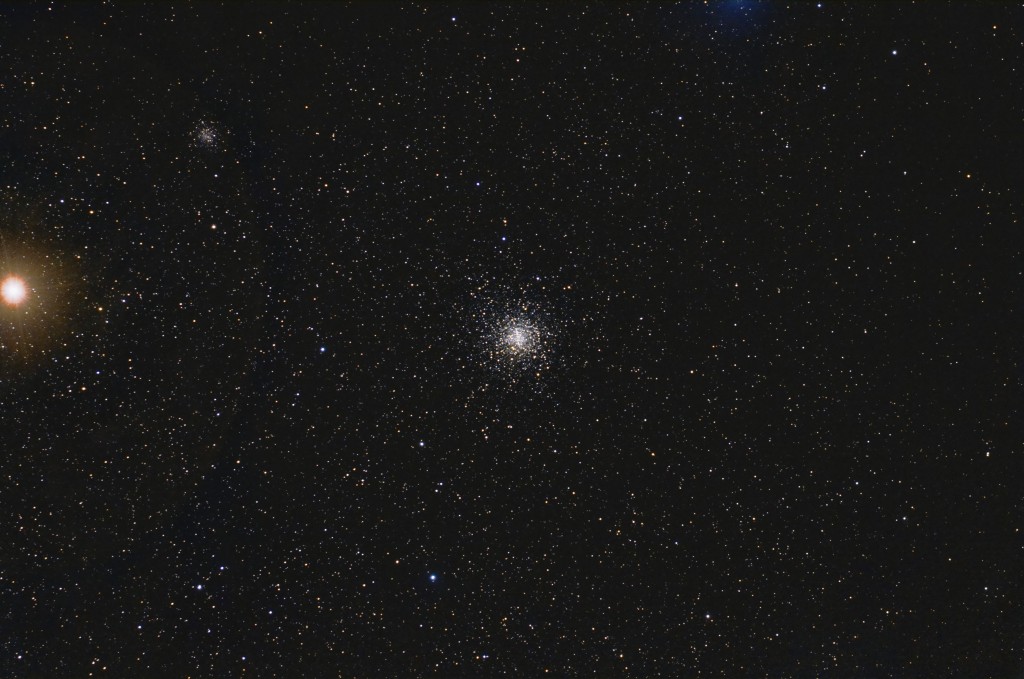
M4 and NGC 6144 are two globular cluster near the bright star, Antares in Scorpius. I shot this while waiting for Comet Pan-STARRS to come into view.
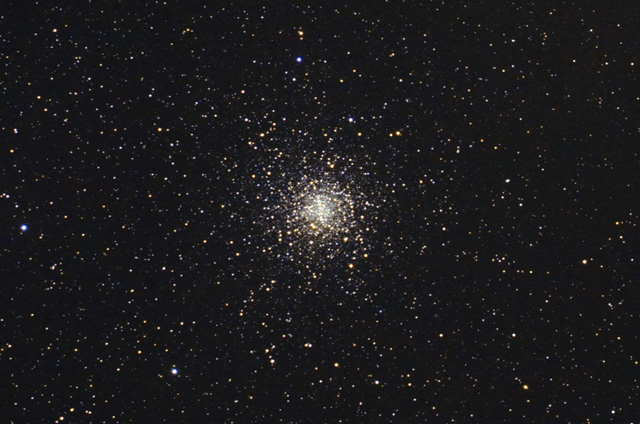
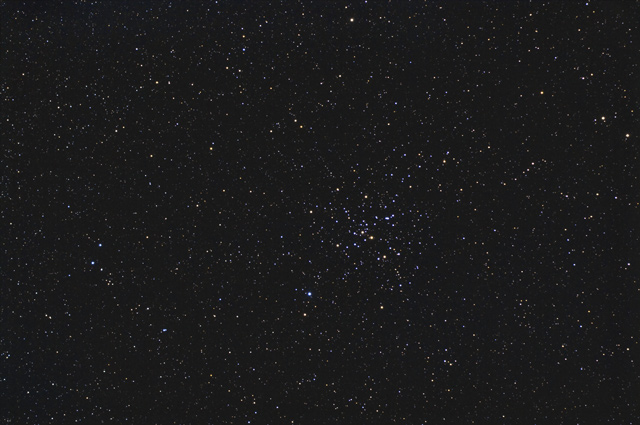
An easy to find open cluster that lies just below Sirius, the brightest star in our skies here in the northern hemisphere. I had just setup and needed something to test the rig and make sure everything was working. M41 was convenient so I shot 10 x 3 minute sub-images and combined those to get this final image. There was lots of moonlight and LP, so open and globular cluster shooting is about all you can do in such conditions.
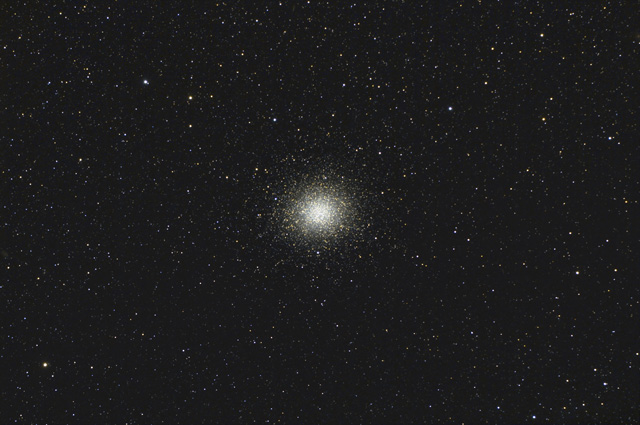
I camped out on Friday night, April 19, 2013 at the old family farm property. I brought everything I needed to image with my Televue TV-85 APO refractor, including my Atlas EQ-G mount. What a load! lol I had fun even with a bright moon out. As soon as Omega Centauri was visible, I started imaging it. Three minutes at ISO 400 was as much as I could go with the moonlight and LP, so I tried to get as many sub-images as possible. I ended up with 42×3 min for a total of 2 hours and 6 minutes worth of integration.
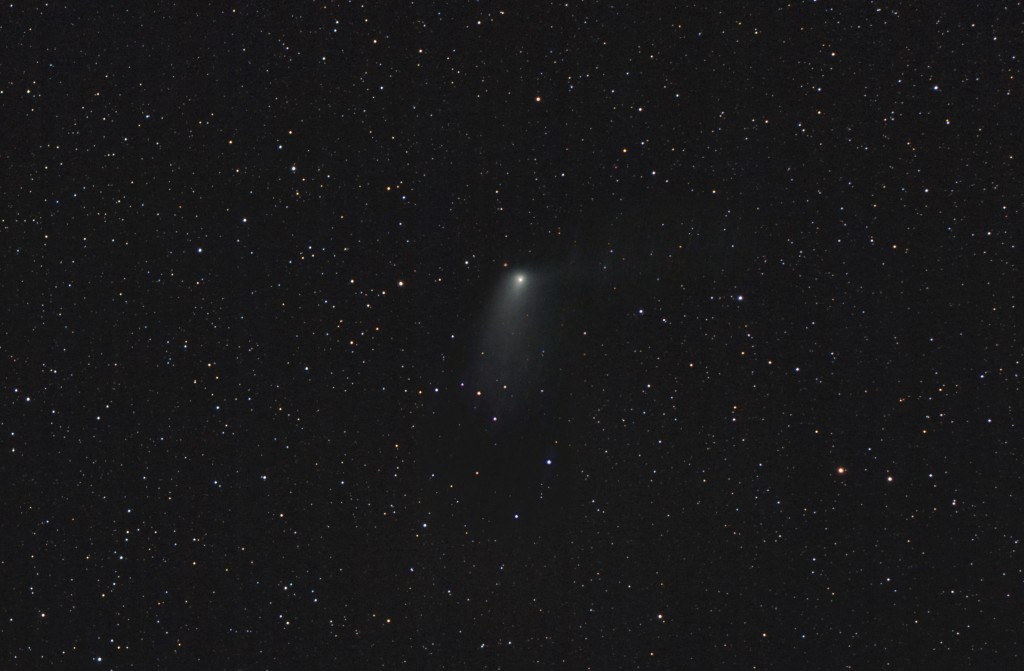
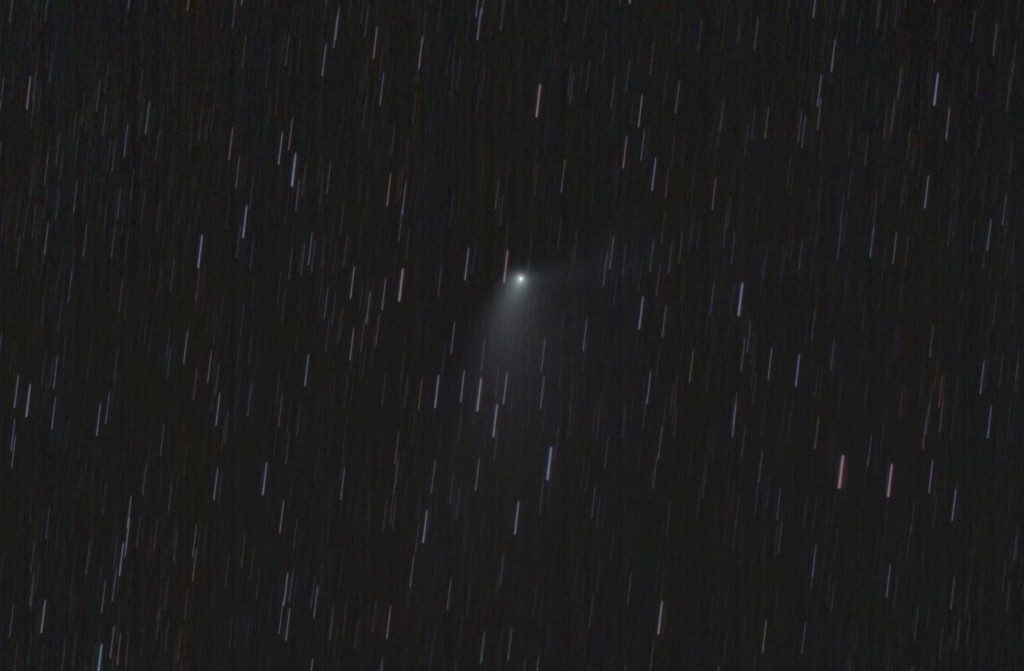
August 20th was probably the last time I was able to shoot Comet Panstarrs before it fades below 7th magnitude. I took all my gear to a spot where the comet was not blocked by trees, like at home. Unfortunately, the LP was bad and transparency was not up to par for this night. I had to shoot with only 1 minute sub-images to get around that. I was also shooting right into a huge light dome from Lafayette, LA to my northeast. I thought I would have had better conditions, but unfortunately they were marginal, at best.
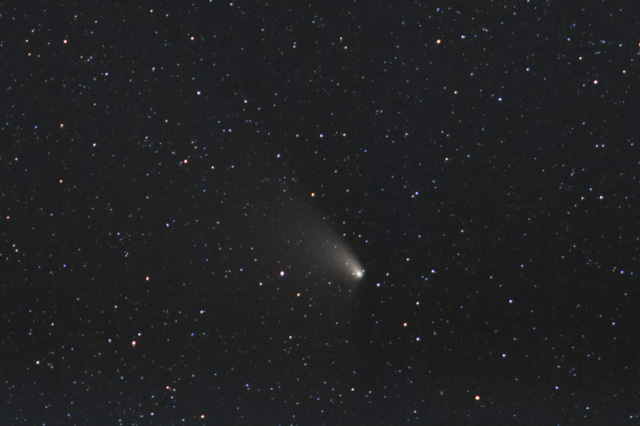
I woke up at 3:45 AM to go out and image Comet Panstarrs on Friday, April 12, 2013. I should have got up at 3:00 AM instead. I didn’t think I would have problems in the field and I cut it way too close to the start of twilight.
What held me up is my mount wasn’t tracking at all at first and I had to haggle with it quite a bit before I could shoot some images. By that time, it was already 5:30 AM and the start of astronomical twilight was upon me. Not quite sure what went wrong.
I shot this with my Canon 200mm telephoto at F/2.8. Its only about 7 minutes worth of integration. I was hoping for 3 times that amount. Oh, well…